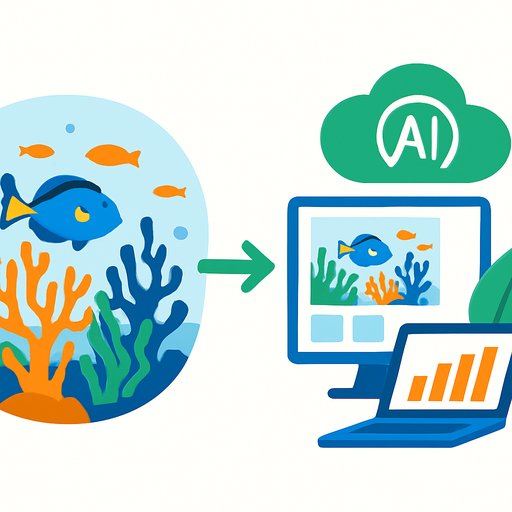New Technology Infrastructure Streamlines AI-Driven Coral Research
As AI expands across research fields, the energy footprint of compute is now a core design constraint. An in-kind contribution from Dell Technologies is helping a Scripps Institution of Oceanography team boost efficiency while reducing emissions across their coral reef program.
The Sandin Lab at Scripps Institution of Oceanography documents reef health using high-resolution imagery converted into 3D models. Each underwater survey can generate roughly 350 GB of data, and the team completes 300-400 surveys annually. Findings show that while many reefs face pressure from overfishing, pollution and climate change, a growing number of ecosystems exhibit stability or resilience-often linked to strong local stewardship.
Why scale and sustainability now go hand in hand
The lab's workload has outgrown legacy infrastructure. Processing millions of images on tight timelines requires substantial compute and storage, plus smarter scheduling to keep electricity use and emissions in check. The team saw an opportunity to re-architect the stack for both throughput and environmental impact.
Energy-aware scheduling and a modernized cluster
With equipment and technical support from Dell, the Sandin Lab upgraded its data center and compute cluster. The project serves as a pilot of Dell's Concept Astro, which applies AI, digital twins, and automation to identify optimal windows and locations for running workloads based on cost, speed, emissions, or a balanced mix. The result: jobs land in cleaner, less congested energy windows without interrupting research.
Early results from the new configuration are concrete. The lab reports a 20% reduction in energy costs, a 32% decrease in emissions, and the ability to process twice as many images in the same time frame. The team can now clear backlog faster while keeping environmental metrics front and center.
From data to insight: a new Visualization Lab
Dell's support also extends to the Eliza and Stuart Stedman Visualization Lab in the Ted and Jean Scripps Marine Conservation and Technology Facility. The space enables researchers to present complex spatial data and large image sets-such as coral reef reconstructions and mangrove studies tied to carbon sequestration-in more intuitive ways for scientists, policy partners, and community groups.
Scaling the analytics pipeline is only part of the value. The visualization environment helps translate technical outputs into decisions and action for those working to protect ocean ecosystems.
What this means for research teams
- Compute and storage modernization aligned with emissions goals
- AI-guided workload placement using digital twins and automation
- Measured gains: 20% energy cost savings, 32% lower emissions, 2x throughput
- Improved communication of results via a dedicated visualization space
To support biodiversity and conservation research, education, and technology at Scripps, contact the development office at supportscripps@ucsd.edu or visit UC San Diego Giving.
If you're building AI workflows for research teams and need practical upskilling, explore AI courses by job for scientists and analysts.
Your membership also unlocks:






